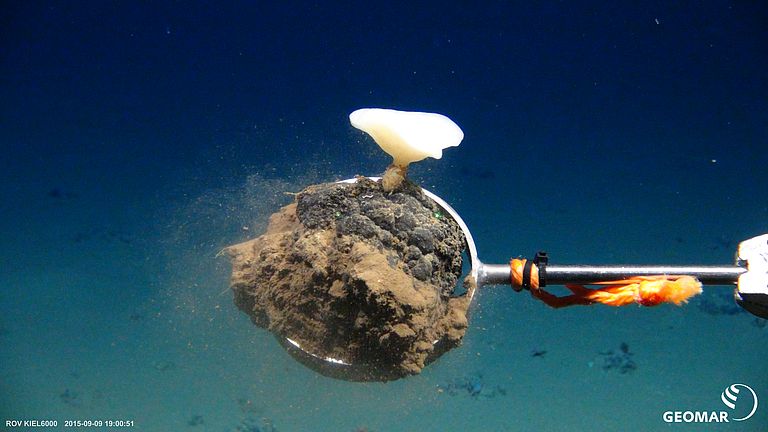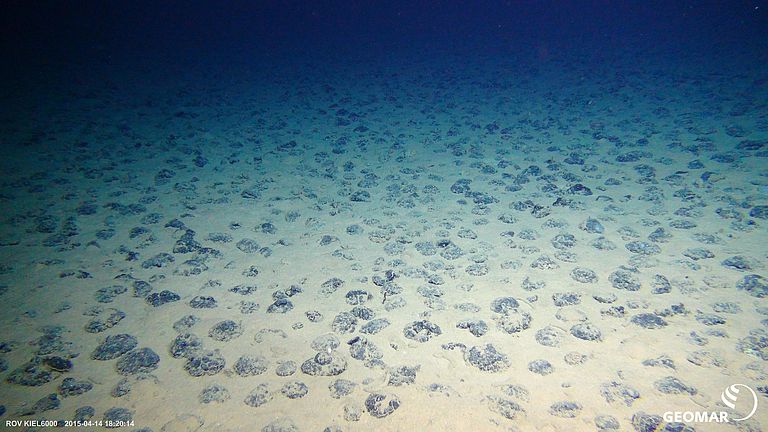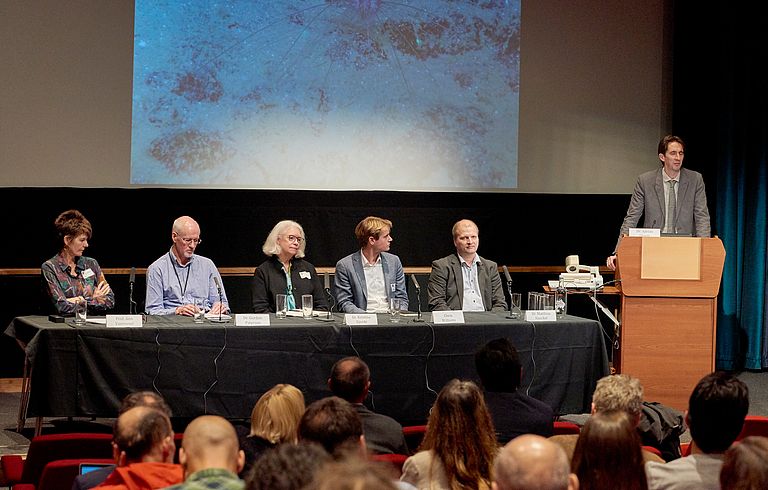Deep-Sea Mining: Transparent Environmental Management Needed
Final meeting of the European research project “MiningImpact” at the NHM London
In the 19th century, some researchers believed that below water depths of 1000 meters life was not possible. Today we know they were wrong. However, the deep sea still surprises scientists. Until recently it was widely believed that the large deep-sea plains in the central Pacific were very uniform and only sparsely populated. Another mistake, as researchers of the European project "MiningImpact" have found out: The ecological diversity in the deep sea is enormous.
This finding has implications for assessing environmental risks of proposed mining of metal ores from the deep sea. That is exactly what the 25 partner institutions of the project have been working on during the past three years. “We wanted to find out what would happen in the central Pacific if manganese nodules were to be mined at industrial scale,” says project coordinator Dr Matthias Haeckel from the GEOMAR Helmholtz Centre for Ocean Research Kiel. This week participants meet at the Natural History Museum London (NHM), one of the project partners, for the final symposium. They not only discuss the results of the individual working groups with stakeholders, such as regulators, NGOs, and companies, but also put forward actual recommendations on how the deep-sea ecosystem could be protected.
A key finding is that the habitat formed by manganese nodules is home to specific sessile and mobile fauna. Species abundance and diversity is related to the nodule density. On the numerous seamounts in the most important area for manganese nodules, the Clarion-Clipperton-Zone (CCZ), different species occur compared to the nodule habitats in the plains. “The nodules are essential to preserve the biodiversity in the deep sea,” says Dr Haeckel. Furthermore, "MiningImpact" scientists emphasize that disturbance impacts on nodule ecosystems last for many decades and affect numerous ecosystem compartments and functions.
Researchers' recommendations include the establishment of protected areas with the same environmental conditions and community composition as in mining areas. “There are already protection zones in the CCZ. They are useful but additional protected areas inside license areas seem to be necessary,” says Dr Haeckel. On the other hand, the project has shown that technology to monitor deep-sea mining is already available. However, an exchange of knowledge between industry and science, as well as a standardization of the investigation protocols is necessary.
These recommendations are directed especially at the International Seabed Authority (ISA). On the basis of the International Convention on the Law of the Sea (UNCLOS), ISA manages the entire seabed outside the exclusive economic zones (200-nautical mile zone) of individual states. The agreement also obliges ISA to ensure the effective protection of the marine environment from possible adverse effects of deep-sea mining. “Therefore the ISA is currently developing legal frameworks for the exploitation if the first states are to apply for mining licenses in the near future,” explains Dr. Haeckel. “We are optimistic that our results will be reflected in this mining code.”
As early as in the 1970s, there were initial plans for the mining of manganese nodules from the deep sea, but they never proceeded past pilot trials. Manganese nodules are ball- or cauliflower-shaped pieces of ore, which occur mostly at depths below 4000 meters on the deep seabeds. They consist not only of manganese, but also contain iron as well as coveted metals, such as copper, cobalt and nickel. "The technical effort to get them out of the deep sea is still extremely high. But the demand for metals is increasing and will continue to do so with a growing world population," Dr. Haeckel, "we should be prepared if a country wants to start mining deep-sea ores."
Please note:
A joint venture of research ministries in eleven European countries has funded the "Mining Impact" project within the Joint Program Initiative Healthy and Productive Seas (JPI Oceans) with a total of 9.5 million euros.
High-res images:
Contact:
Jan Steffen (GEOMAR, Communication & Media), Tel.: (+49) 0431 600-2811, presse(at)geomar.de
Contact during the meeting in London:
Kristin Hamann (project assistant MiningImpact), +49 0177-6969344





